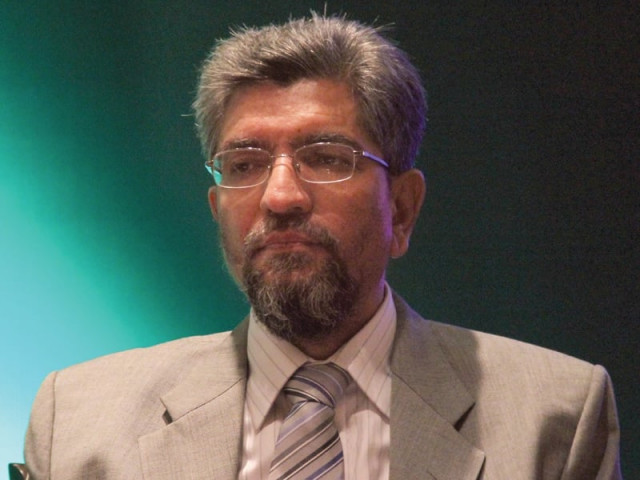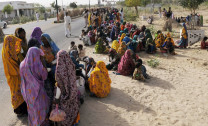Expert suggests Pakistan adopt ‘One child’ policy to defuse the population bomb
Govt officials and health experts discuss public health issues and bureaucratic holdups.

Dr Farid Midhet, a former director at the Asia Foundation, expressed these views on Tuesday while attending a dialogue organised by the JSI Research Institute and the Aga Khan University Hospital (AKUH). The United States Agency for International Development (USAID) facilitated the event. Officials from the provincial health and population welfare departments as well as health experts came together to discuss public health issues and the bottlenecks that have emerged after healthcare and population planning were devolved to the provinces after the 18th constitutional ammendment.
Dr Midhet said that Pakistan’s population was set to cross the 200-million mark by 2020. But he also thought that it was asking too much of the government to implement the “One child” policy. “The high percentage of youngsters will not be of any advantage to the country unless they are well educated.” Mega urban centres like Karachi are being squeezed for space as population densities are rising, added the expert.
Socioeconomic factors
Dr Midhet observed that a woman who received no schooling was more likely to die during pregnancy or delivery than the one who did. The husband’s level of education, meanwhile, appeared to have no effect on the maternal mortality rate.
Only 30 per cent of Pakistan’s citizens use contraception, the lowest rate in the region. Not surprisingly, the country also boasts the highest fertility rate in the region, at 4.1 births per woman. Dr Midhet suggested that family planning programmes and healthcare policies should focus on increasing the availability and usage of contraceptives through campaigns run by lady health workers and by bringing men and religious leaders on board.
While sharing data from a study conducted in 1995 on women who had died and were brought to Jinnah hospital, Prof Sadiqua N Jafarey said that most of those who died belonged to the lower socio-economic strata. Prof Jafarey said that 36 of the women died because of lack access to healthcare facilities, 25 per cent due to lack of transport, 13 per cent for the absence of the husband, and 11 per cent due to financial difficulties.
Sindh faring worse than K-P
Despite the increase in the prevalence of health services like prenatal care and tetanus immunisation from 1991 to 2007 in Sindh, the maternal mortality rate in the province, at 311 deaths per 100,000 live births, is higher than the national average of 274 deaths. Dr Nabeela Ali of USAID’s technical assistance unit for health added that Sindh’s health indicators were poorer than those of war-torn Khyber-Pakhtunkhwa, and only slightly better than those of the worst affected province, Balochistan.
Dr Zulfiqar A Bhutta, founding chair of the women and child health division at AKUH, presented ways in which key reproductive health factors, including family planning and malnutrition, could be tackled in an integrated manner in Sindh. He advised the government to focus on providing post-natal care, as 45 per cent of total deaths can be prevented if two conditions, pneumonia and diarrhea, could be tackled in an effective manner.
DG Health Dr Feroz Memon, additional health secretary Dr Suresh Kumar, Heath Reform Support Unit chief Kiran Noman and Newborn and Child Health Sindh manager Dr Saheb Jan, talked about bureaucratic issues like low funding and post devolution problems.
Published in The Express Tribune, October 17th, 2012.



















COMMENTS
Comments are moderated and generally will be posted if they are on-topic and not abusive.
For more information, please see our Comments FAQ